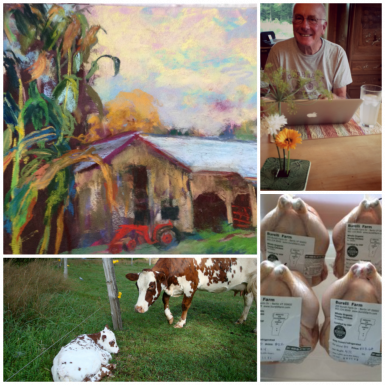Reflections in the Plague Year
In 1665 the author Daniel DeFoe (“Robinson Crusoe”) wrote his “Journal of the Plague Year,” a breathtaking, tragic account of the devastating bubonic plague that struck his native city of London. Read Defoe's journal at https://www.gutenberg.org/files/376/376-h/376-h.htm
The entire world is now enduring the “Plague” of the Covid-19 pandemic; one that has horrific implications for our physical and mental well-being. Unprecedented in modern times, this infection requires those of us in the helping professions to be especially conscious of its impact and to address the concerns of our patients with compassionate psychological treatment methods designed to help lessen the anxiety and suffering that they bring to our attention.
A colleague has suggested that a timely topic would center around coping strategies for us to employ during this tragic episode in our collective lives. Since that conversation, I have given the matter a great deal of thought. The suggestion is timely and I will address it here from my own perspective, that of my profession as an analytic psychotherapist.
Self-help websites, Facebook posts and the media offer many coping suggestions that may prove useful. I’ve spent a good deal of time and energy perusing the contents of some of these, and there’s no doubt in my mind that they can be helpful, depending on individual needs and circumstances. Some of the suggestions that others have offered include: mindfulness exercises, meditation, physical exercise, yoga, spending time outdoors, eating nutritious, balanced meals, avoiding substance abuse, engaging in enjoyable activities, and connecting with friends and loved ones.
I recommend doing one’s own search for meaningful activities designed to help reduce stress during trying times.
The intent of such recommendations is relieving the suffering that the pandemic has wrought upon the world. To some degree or other, some more than others, depending upon each person’s needs, they will be effective, in the moment or with long-lasting outcomes.
My perspective as a psychotherapist has taken me in a slightly different direction. Much of my work with those who come to me seeking help and guidance requires me to seek long-term solutions; to help each of those who come to me for help to find ways to transform their lives so as to have valuable tools ready at hand to deal with whatever slings and arrows life throws at them.
The feedback I’ve been getting from some of my therapy patients represents a continuum of thoughts, feelings and reflections. A common undercurrent is that of anxiety. For most, their worries are in the forefront and never far from their feelings and thoughts. A major concern is the impact of the pandemic on their daily lives, including the disease itself, or its implications for those close to them who might be contracting the virus. And then there are finances, having the monetary resources sufficient to maintain ample supplies of food and other necessities. Another vital thread is the education of children during their enforced absence from school. Not least, fears about whether life as we have previously known it will be able to resume in the near future . . . or ever.
In this year of “The Plague,” we need to pay attention to our fears, but we need not allow our fears to overtake and rule us. The Surgeon General was once not long ago quoted as saying that “this is going to be the hardest and saddest week of most Americans’ lives.” Undoubtedly there is much truth in his pronouncement. But it need not be the whole truth.
On the opposite end of the spectrum I witness statements of optimism and hope. Some patients are telling me that they welcome this respite from normality; that they find working from home a relief rather than a burden, and that the situation has given them a different perspective on life; emphasizing those things that are more truly important to them rather than the activities that seemed essential pre-pandemic, but have now faded in emphasis.
Their point of view brings to mind a poem that I learned many years ago:
“The world is too much with us; late and soon,
Getting and spending, we lay waste our powers
Little we see in nature that is ours.”
(William Wordsworth, 1802)
For those of us who have done inner work, facilitated by therapists who’ve walked before us on their own paths deep into the Psyche, our and their views on life now focus on seeing into our “nature.” The 20th century psychiatrist C.G. Jung termed this activity “Individuation.” It was defined by him in this way:
“In general it (individuation) is the process by which individual beings are formed and differentiated. . . “
The keyword here is “differentiated.” It means becoming the person we were truly meant to be, rather than who we have been enculturated to have become, due to the influence of those such as parents, teachers, and the messages we continually receive from the society we live in.
By all means, during this difficult time, make use of the suggestions from knowledgeable authorities such as those to be found on the CDC website and in many other places. Do whatever works for you to relieve your fears about the current tragic situation.
For those of you who find yourselves with a desire to travel in search of your own particular essence, social isolation may provide a respite to begin work with trained, sympathetic therapists who began their own inner work at a time of past personal or widespread crisis. Vermont Wellness Collaborative offers a variety of therapeutic services.
If this resonates with you, contact me for further information or for a referral to a competent, caring professional now or whenever in the future you feel ready to look more intensely into yourself.
Contact Information: Peter Peter Allan Burmeister, Psychotherapist and Organic Farmer/Activist

